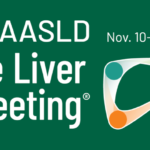
Editor’s Note:
From November 10th to 14th, the annual highlight event in the field of hepatology, the American Association for the Study of Liver Diseases (AASLD) 2023 Annual Meeting, took place in Boston, USA. Dr. Song Yang’s team from Beijing Ditan Hospital, Capital Medical University, presented two research findings in the field of alcoholic liver disease, revealing that sarcopenia defined by L3-SMI is an independent predictor of survival in Chinese mainland alcoholic liver disease patients. Furthermore, the study suggests that MELD 3.0 is not superior to MELD-Na in predicting the survival of Chinese alcoholic liver disease patients. Hepatology Digest reports this, and the relevant content is shared below.

Research One: Sarcopenia Defined by L3-SMI is an Independent Predictor of Survival in Chinese Alcoholic Liver Disease Patients

Research Overview
Background:
In China, the burden of alcoholic liver disease (ARLD) continues to rise. ARLD patients are more prone to developing muscle loss, which may affect their survival. The relationship between sarcopenia and the prognosis of ARLD patients in China is not yet clear. This study aimed to evaluate the relationship between the prognosis of ARLD patients and sarcopenia using the skeletal muscle index at the third lumbar vertebra level (L3-SMI).
Methods:
The study included ARLD patients hospitalized from 2015 to 2018, with a follow-up of 24 months to assess their survival. A Cox proportional hazards regression model was used to analyze factors influencing patient survival. Receiver operating characteristic curves (ROC) were drawn to determine the cutoff point of L3-SMI in predicting the prognosis of ARLD patients in China.
Results:
The study included 168 male ARLD patients, followed up for 24 months or until reaching the study endpoint. The overall L3-SMI of ARLD patients was (42.61 ± 9.15) cm/m2; 42.86% (72/168) of ARLD patients had sarcopenia. The 24-month overall survival rate of ARLD patients was 77.38%. The survival rate of patients with sarcopenia was lower than that of those without sarcopenia (66.67% vs. 85.42%, P=0.004). Multivariate Cox regression analysis showed that sarcopenia, abstinence from alcohol, and baseline creatinine level were independent prognostic factors affecting patient survival at 24 months, with hazard ratios (95% confidence intervals) of 2.022 (1.025 ~ 3.991), 0.275 (0.122 ~ 0.617), and 1.018 (1.008 ~ 1.027), respectively. The cutoff value of L3-SMI to predict the 24-month survival of male ARLD patients was 40.0 cm/m2.
Research Conclusion:
Sarcopenia is an independent risk factor for mortality in male ARLD patients in mainland China. Early diagnosis and intervention for sarcopenia are of significant importance in optimizing the management of ARLD patients.

Note: a: Overall, b: Sarcopenia, c: Resumption of drinking, d: MELD score, e: Maddrey discriminant function, f: Child-Pugh.


Researcher’s Comments:
Muscle loss is a common complication and a critical risk factor in chronic liver disease, and if not treated promptly, it can have adverse effects on the prognosis and recovery of patients [1,2]. The prognosis of ARLD patients with concomitant sarcopenia is an extremely severe and widespread phenomenon that should receive sufficient clinical attention globally [3-5]. Timely diagnosis of sarcopenia is beneficial for early identification of patients at higher risk of clinical decompensation.
However, the relationship between sarcopenia and the prognosis of ARLD patients in China is still unclear [6]. In the Chinese population, the cutoff point for diagnosing sarcopenia using L3-SMI has not yet been determined. Dr. Song Yang’s team recently conducted a study aiming to evaluate the relationship between the prognosis of ARLD patients and sarcopenia through L3-SMI. The study concluded that sarcopenia is an independent risk factor for mortality in male ARLD patients in mainland China, with a cutoff value of 40.0 cm/m2 for predicting the 24-month survival of male ARLD patients using L3-SMI. Early diagnosis and intervention for sarcopenia are crucial for optimizing the management of ARLD patients.
First Author’s Biography

– Doctor of Medicine, Peking University
– Attending physician in the Department of Liver Diseases, Beijing Ditan Hospital, Capital Medical University
– Research focus: Evaluation of the predictive value of MELD 3.0 in one-year survival of Chinese patients with alcohol-related liver disease (ARLD)
Research 2
Title: “MELD 3.0 is not superior to MELD-Na in predicting the survival of patients with alcohol-related liver disease: a retrospective cohort study”

Research Overview
Background:
The Model for End-Stage Liver Disease (MELD) 3.0 has shown good predictive capabilities for mortality in patients with end-stage liver disease. However, its predictive value for mortality in alcohol-related liver disease (ARLD) patients has not been assessed. This study aimed to evaluate the predictive role of MELD 3.0 on the one-year mortality rate of ARLD patients.
Methods:
The study included ARLD patients admitted to Beijing Ditan Hospital from 2015 to 2018, with regular follow-ups over 12 months. Baseline MELD, MELD-Na, MELD 3.0, and Modified Maddrey Discriminant Function (MDF) scores were calculated. Time-dependent area under the receiver operating characteristic curves (AUROC) analysis was used to compare the predictive abilities of MELD, MELD-Na, MELD 3.0, and MDF for one-year mortality in both ARLD and alcoholic hepatitis (AH) patients.
Results:
The study included 576 ARLD patients, including 209 with AH. Over the 1-year follow-up, 14.8% (84/576) of ARLD patients and 23.4% (49/209) of AH patients died. The MELD, MELD-Na, MELD 3.0, and MDF scores were higher in deceased patients compared to survivors (all P < 0.001). In the AH subgroup, deceased patients had significantly higher scores for all measures (MELD: P < 0.001, MELD-Na: P < 0.001, MELD 3.0: P = 0.007, MDF: P = 0.017). The AUC for predicting one-year survival in ARLD patients was 0.682 for MELD 3.0, lower than MELD (0.728, P < 0.001) and MELD-Na (0.735, P < 0.001). In the AH subgroup, MELD 3.0’s AUC was lower than MELD-Na (0.634 vs. 0.708, P < 0.001).
Conclusion:
MELD 3.0 is not superior to MELD or MELD-Na in predicting the survival of ARLD patients.


Tables 3 and 4 provide comparative data for different models in predicting mortality rates in ARLD and AH patients, respectively
Researcher’s Commentary:
MELD and MELD-Na scores demonstrate good predictive value for the survival of patients with alcohol-related liver disease, particularly in severe alcoholic hepatitis cases. The recently proposed MELD 3.0 score has shown effectiveness in predicting short-term mortality in patients with end-stage alcohol-related liver disease. However, this study by Dr. Song Yang’s team reveals that MELD 3.0 is not superior to MELD or MELD-Na in predicting the survival of ARLD patients. MELD-Na continues to have better predictive value, holding significant clinical implications for the assessment and treatment of patients with alcohol-related liver disease.
First Author’s Biography

– Currently pursuing a Ph.D. in Internal Medicine (Infectious Diseases) at Capital Medical University
Reference :
[1] X. Tantai, Y. Liu, Y. H. Yeo, et al. Effect of sarcopenia on survival in patients with cirrhosis: A meta-analysis. J Hepatol. 2022; 76(3):588-599.
[2] J. Xiong,Y. Tian. Evaluating sarcopenia in patients with cirrhosis: The role of muscle function. J Hepatol. 2022; 77(2):564-565.
[3] J. G. Fan. Epidemiology of alcoholic and nonalcoholic fatty liver disease in China. J Gastroenterol Hepatol. 2013; 28 Suppl 1:11-17.
[4] X. Zeng, Z. W. Shi, J. J. Yu, et al. Sarcopenia as a prognostic predictor of liver cirrhosis: a multicentre study in China. J Cachexia Sarcopenia Muscle. 2021; 12(6):1948-1958.
[5] F. Duan, C. Liu, Y. Liu, et al. Nomogram to Predict the Survival of Chinese Patients with Alcohol-Related Liver Disease. Can J Gastroenterol Hepatol. 2021; 2021:4073503.
[6] M. Kong, N. Geng, Y. Zhou, et al. Defining reference values for low skeletal muscle index at the L3 vertebra level based on computed tomography in healthy adults: A multicentre study. Clin Nutr. 2022; 41(2):396-404.
[7] Morales-Arraez D, Ventura-Cots M, Altamirano J, Abraldes JG, Cruz-Lemini M, Thursz MR, et al. The MELD Score Is Superior to the Maddrey Discriminant Function Score to Predict Short-Term Mortality in Alcohol-Associated Hepatitis: A Global Study. Am J Gastroenterol 2022;117:301-310
.[8] Fernandes SR, Marques da Costa P, Vitor S, Carvalho JR, Santos P, Moura CM, et al. Predicting short-term and long-term mortality of hospitalized Portuguese patients with alcoholic hepatitis. Eur J Gastroenterol Hepatol 2017;29:1141-1148.
[9] Gholam PM. Prognosis and Prognostic Scoring Models for Alcoholic Liver Disease and Acute Alcoholic Hepatitis. Clin Liver Dis 2016;20:491-497.
[10] Kadian M, Kakkar R, Dhar M, Kaushik RM. Model for end-stage liver disease score versus Maddrey discriminant function score in assessing short-term outcome in alcoholic hepatitis. J Gastroenterol Hepatol 2014;29:581-588.
[11] Srikureja W, Kyulo NL, Runyon BA, Hu KQ. MELD score is a better prognostic model than Child-Turcotte-Pugh score or Discriminant Function score in patients with alcoholic hepatitis. J Hepatol 2005;42:700-706.
[12] Kim WR, Mannalithara A, Heimbach JK, Kamath PS, Asrani SK, Biggins SW, et al. MELD 3.0: The Model for End-Stage Liver Disease Updated for the Modern Era. Gastroenterology 2021;161:1887-1895 e1884.
TAG: AASLD 2023, Voice of China, alcohol- related liver disease




